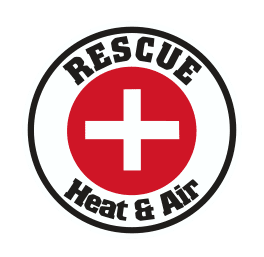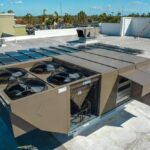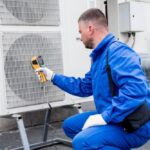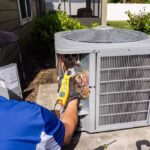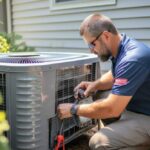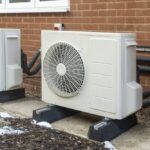Table of Contents
Living in Oklahoma means experiencing some of the most unpredictable weather in the country – from scorching summers to bitter cold winters. These extreme shifts put enormous pressure on residential HVAC systems, often revealing hidden issues or accelerating wear and tear.
At Rescue Heat & Air, we’ve seen it all—and fixed it all. From malfunctioning thermostats to frozen coils, the problems might vary, but the solutions always start with informed homeowners and regular maintenance. In this post, we’ll break down the most common HVAC issues we encounter in Oklahoma homes and how you can prevent them before they turn into costly repairs.
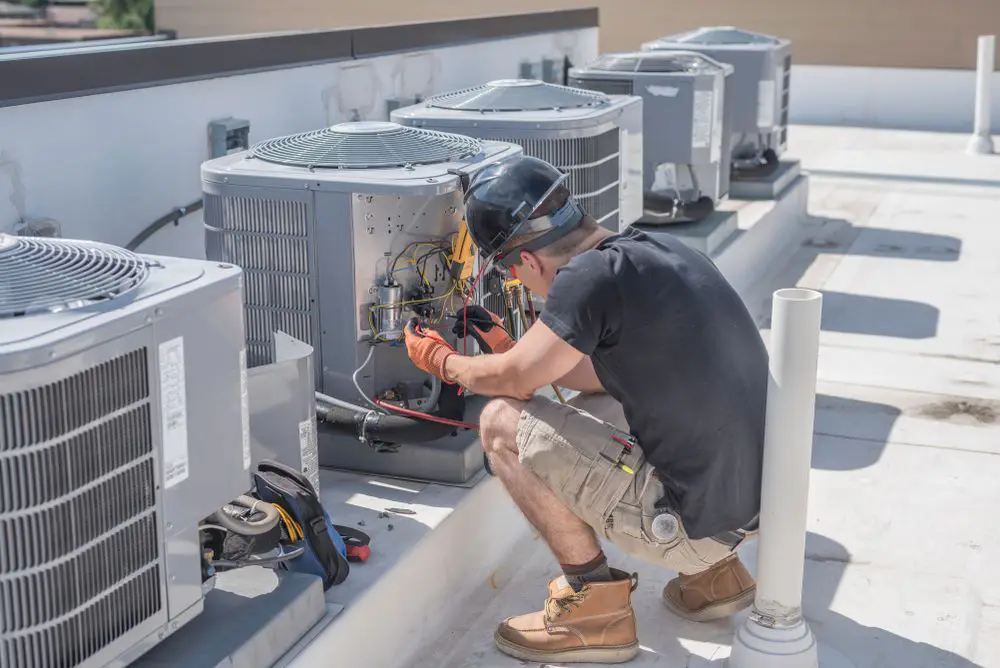
6 HVAC Issues That Could Be Costing You Comfort and Cash
Even small HVAC issues can snowball into big problems—affecting your comfort, energy bills, and system lifespan. Below are 9 common HVAC troubles we frequently see in Oklahoma homes and how to prevent them.
1. Clogged or Dirty Air Filters
Why it’s a problem:
Dust, pollen, and pet dander are abundant in Oklahoma homes, especially during allergy season. When filters become clogged, airflow is restricted, causing your system to work harder—and your energy bill to climb.
How to prevent it:
Check your filters monthly and replace them every 1–3 months depending on usage and home conditions. Homes with pets or high dust levels may require more frequent replacements.
2. Frozen Evaporator Coils
Why it’s a problem:
When airflow is restricted (often due to dirty filters or blocked ducts), the evaporator coil may freeze. This prevents your system from cooling properly and can eventually cause compressor damage.
How to prevent it:
Keep filters clean and schedule regular HVAC maintenance to ensure your coils and ductwork are debris-free and in proper working order.
3. Faulty Thermostats
Why it’s a problem:
Inconsistent temperatures, unresponsive systems, or short cycling may not be the fault of your HVAC unit—it could be your thermostat. Older models often lose accuracy over time.
How to prevent it:
Upgrade to a programmable or smart thermostat and ensure it’s calibrated correctly. During service visits, our technicians can test and replace faulty units if needed.
4. Refrigerant Leaks
Why it’s a problem:
A lack of refrigerant makes it impossible for your AC to cool efficiently. It also puts extra strain on the system, which may lead to a full breakdown if not addressed.
How to prevent it:
If your home isn’t cooling properly and your energy bill spikes, it could be a sign of a refrigerant leak. Annual maintenance checks from a licensed contractor can catch leaks early.
5. Uneven Heating and Cooling
Why it’s a problem:
Hot and cold spots throughout your home usually point to poor duct design, blocked vents, or malfunctioning dampers. Left unchecked, it reduces system efficiency and increases discomfort.
How to prevent it:
Have your ductwork inspected for leaks or obstructions. Make sure vents and returns are unobstructed. A zoning system might also help regulate temperatures more evenly.
6. Short Cycling (System Turns On and Off Frequently)
Why it’s a problem:
Short cycling stresses your HVAC system and often results in premature wear. It could be caused by overheating, refrigerant issues, or improper unit sizing.
How to prevent it:
Ensure your HVAC system is properly sized for your home and maintained regularly. Our experts can inspect short cycling issues and recommend the right solution.
7. Dirty or Leaky Ductwork
Why it’s a problem:
Leaky ducts can waste up to 30% of your conditioned air, meaning your system works harder while your comfort suffers. Dirty ducts can also reduce indoor air quality.
How to prevent it:
Schedule professional duct cleaning and sealing every few years. Not only does it improve airflow, but it can also reduce allergens and dust circulating in your home.
8. Tripped Breakers or Blown Fuses
Why it’s a problem:
Repeated tripped breakers may indicate an underlying electrical issue with your HVAC system—often the result of overworking components, faulty wiring, or motor failure.
How to prevent it:
Don’t ignore frequent electrical issues. Call a licensed HVAC contractor to investigate the root cause. We’ll ensure your system is safe and operating efficiently.
9. Pilot or Ignition Problems in Furnaces
Why it’s a problem:
In colder months, ignition issues can keep your furnace from firing up. Whether it’s due to a dirty sensor, faulty igniter, or thermocouple issue, you’re left with a chilly home.
How to prevent it:
Schedule fall furnace inspections to catch ignition issues early. Regular cleaning and safety checks go a long way in avoiding a mid-winter emergency.
How Rescue Heat & Air Helps Oklahoma Homeowners
At Rescue Heat & Air, we’ve been serving Claremore, Tulsa, Owasso, and surrounding Oklahoma communities for years. We know the local climate, common system issues, and the best ways to proactively maintain your HVAC investment.
When you call us, you’re not just getting a repair—you’re getting a partner who’s committed to keeping your home comfortable year-round. Our services include:
- Residential and commercial HVAC repairs
- Preventive maintenance and seasonal tune-ups
- Duct cleaning and sealing
- Smart thermostat installation
- System replacements and professional sizing
Whether you’re dealing with a noisy unit, poor airflow, or just want peace of mind before the next season hits, we’re here to help.
Final Thoughts: Don’t Wait for a Breakdown
Most HVAC emergencies are preventable with the right knowledge and regular maintenance. By understanding these common HVAC issues and how to avoid them, you save money, extend the life of your system, and improve your indoor comfort year- round.
When you’re ready for expert support, Rescue Heat & Air is just a phone call away.
Need Reliable HVAC Help in Oklahoma?
Call Rescue Heat & Air at 918-946-6681 or schedule your service online. We’ll help you prevent problems before they start—and solve them fast when they do.
